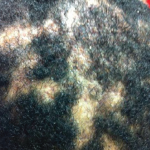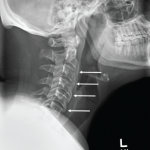 ACR Convergence 2020—In the session titled Autoinflammatory Diseases: Mechanisms and Management, experts discussed the underlying immunopathology of autoinflammatory disease in adults.
ACR Convergence 2020—In the session titled Autoinflammatory Diseases: Mechanisms and Management, experts discussed the underlying immunopathology of autoinflammatory disease in adults.
Polly Ferguson, MD, a pediatric rheumatologist and director of the division of pediatric rheumatology at University of Iowa Stead Family Children’s Hospital in Iowa City, opened the session talking about SAPHO (i.e., synovitis, acne, pustulosis, hyperostosis and osteitis), a rare syndrome in adults characterized by skin and osteoarticular manifestations and one with many aliases, including CRMO (i.e., chronic recurrent multifocal osteomyelitis), a syndrome used in pediatric rheumatology and characterized by sterile osteomyelitis in one or more locations with or without skin, intestine or joint inflammation.
Both syndromes share similar clinical manifestations, including osteo-articular symptoms (e.g., pain, stiffness, joint swelling/warmth) and dermatologic symptoms (i.e., palmar-plantar pustulosis (PPP), psoriasis vulgaris and severe acne).
Although no validated diagnostic criteria currently exist for SAPHO, Dr. Ferguson pointed to criteria proposed by Kahn in 2003 in which osteitis/osteomyelitis is fundamental to the diagnosis.1 Specific inclusion criteria proposed by Kahn include bone-joint involvement with palmoplantar pustulosis, bone-joint involvement with severe acne, isolated sterile hyperostosis/osteitis and CRMO in children. Exclusion criteria include bone tumors and non-inflammatory condensing bone lesions, such as osteopoikilosis and steopathia striata.
Data from two studies describing the clinical features of SAPHO patients highlight the need for improved diagnosis, Dr. Ferguson said. A 1999 study of 120 patients by Haymen found 91% had osteitis and 84% had skin disease, with a median age of onset of 37.7 years and a delay in diagnosis of nearly 20 years after first clinical manifestations of disease.2 A more recent 2020 study of 249 patients with SAPHO with PPP or severe acne found a median age of disease onset of 20 years for those with severe acne and 37 years for those with PPP, with a seven-year delay in diagnosis for those with severe acne and a one-year delay for those with PPP.3
No validated diagnostic criteria currently exist for SAPHO.
Dr. Ferguson discussed the immunopathology of SAPHO in which immune dysregulation results in pro-inflammatory cytokine production, with genetic models supporting the role of interferon-1 (IL-1) in its pathogenesis.
Currently, SAPHO is treated empirically with off-label agents due to the lack of FDA-approved medications. Nonsteroidal anti-inflammatory drugs (NSAIDs) are used most often but are inadequate, she said, along with non-biologic disease-modifying anti-rheumatic drugs, including methotrexate, sulfasalazine and (more recently) Janus kinase inhibitors.
Dr. Ferguson said the evidence on biologics indicates the greatest benefit on bone and joints (less on skin) occurs with anti-tumor necrosis factor agents.4
A Genotype-First Diagnosis
Dan Kastner, MD, PhD, the scientific director of the National Human Genome Research Institute, Bethesda, Md., discussed a recently published study in which researchers used a novel approach to identify a new, undiagnosed inflammatory disease. This approach was taken to help resolve the many cases of undiagnosed autoinflammatory disease. To date, he said, of the 3,000 people in the U.S. National Institutes of Health autoinflammatory disease cohort, only 1,000 have a diagnosis.
In the new study, Beck and colleagues used a genotype approach to identify a new disorder shared by adults who clinically manifested and were diagnosed with a variety of apparently unrelated inflammatory disorders.5 In total, they identified 25 men diagnosed with various diseases (i.e., relapsing polychondritis, Sweet’s syndrome, myelodysplastic syndrome, multiple myeloma, polyarteritis nodosa and giant cell arteritis) who shared underlying somatic mutations in a protein coding gene (UBA1). The researchers called this new syndrome VEXAS, which stands for vacuoles, E1 ubiquitin-activating enzyme, X-linked, autoinflammatory and somatic syndrome (see ).
“Using a genotype-first strategy, one can define new illnesses based on genetic variants shared among patients carrying distinct clinical diagnoses,” said Dr. Kastner, adding that this approach may result in a new molecular taxonomy of rheumatic disease. He also emphasized that somatic variants for genes encoded on the X-chromosome (such as those found underlying VEXAS) are probably under-recognized, and that somatic mutations may account for a significant fraction of adult-onset inflammatory disease.
Mary Beth Nierengarten is a freelance medical journalist based in Minneapolis.
References
- Kahn MF. (October 2003). Proposed classification criteria of SAPHO syndrome. American College of Radiology.
- Hayem G, Bouchaud-Chabot A, Benali K, et al. SAPHO syndrome: A long-term follow-up study of 120 cases. Semin Arthritis Rheum. 1999 Dec;29(3):159–171.
- Liu S, Tang M, Cao Y, et al. Synovitis, acne, pustulosis, hyperostosis, and osteitis syndrome: Review and update. Ther Adv Musculoskel Dis. 2020 May 12;(12):1–14.
- Daoussis D, Konstantopoulou G, Kraniotis P, et al. Biologics in SAPHO syndrome: A systematic review. Semin Arthritis Rheum. 2019 Feb;48(4):618–625.
- Beck DB, Ferrada MA, Sikora KA, et al. Somatic mutations in UBA1 and severe adult-onset autoinflammatory disease. N Engl J Med. 2020 Dec 31;383(27):2628–2638.




